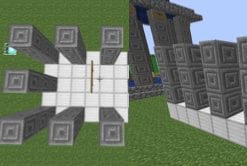This webinar will provide examples of unique and exciting ways to showcase inquiry learning for the “share phase.”
The Common Core State Standards require teachers of all disciplines to integrate writing and technology into their curriculum. In this webinar, learn how student-created eBooks can be used to engage students, while meeting the demands of the Common Core. California teacher Stacy Olson shared strategies for using Shutterfly’s free Photo Story App for the iPad to inspire enthusiastic, confident student authors while also fulfilling CCSS.
Writing, and associated Speaking and Presentation, is the method by which we show our thinking. How do we plan for and execute instruction at the deepest levels of cognition (DOK 3 and 4) using writing and speaking to synthesize learning and assess student performance?
The challenge of meeting the requirements of increased rigor and depth can be impossible if we don’t create strategies to save time. How can we combine projects, practice, and prompts to achieve difficulty and complexity requirements simultaneously?
With the release of the “Common Core” standards, the phrase “Close Reading” became a buzz overnight. In many classrooms, the idea of “Close Reading” resulted in kids failing at tortuous lesson, and teachers drowning in pre-planning with very little student results. In this session, presenter Kevin Baird discussed highest impact strategies for implementing College & Career Ready standards by looking again at the concept of Precision and Precision Reading.
The Common Core State Standards place an increased emphasis on the reading of informational text. Specifically, the Standards for grades K-5 call for a 50-50 balance of literary and informational text, following the lead of the National Assessment of Educational Progress. This emphasis on nonfiction increases in the upper grades.
How prepared are the K-12 teachers of tomorrow to inspire the next generation of young mathematicians? It is essential for pre-service teachers to learn, develop, and model the Standards for Mathematical Practice to improve learning for their future students.
“Your students’ work is being affected by their out-of-school video gaming! The average gamer plays 13 hours a week.” Don’t you wish your students were spending that much time reading and writing outside of your classroom? Well—in many cases they are!
It’s the number one priority for our classrooms as we get back to school. How do we plan our lessons, and integrate resources, to support deeper vocabulary investigation and greater collaboration and conversation?
In this webinar for the Game-Based Learning community, third grade teacher Jim Pike demonstrated Mathcraft, a Common Core Math curriculum centered around the popular video game Minecraft that he developed and has been using with his students over the past year.











